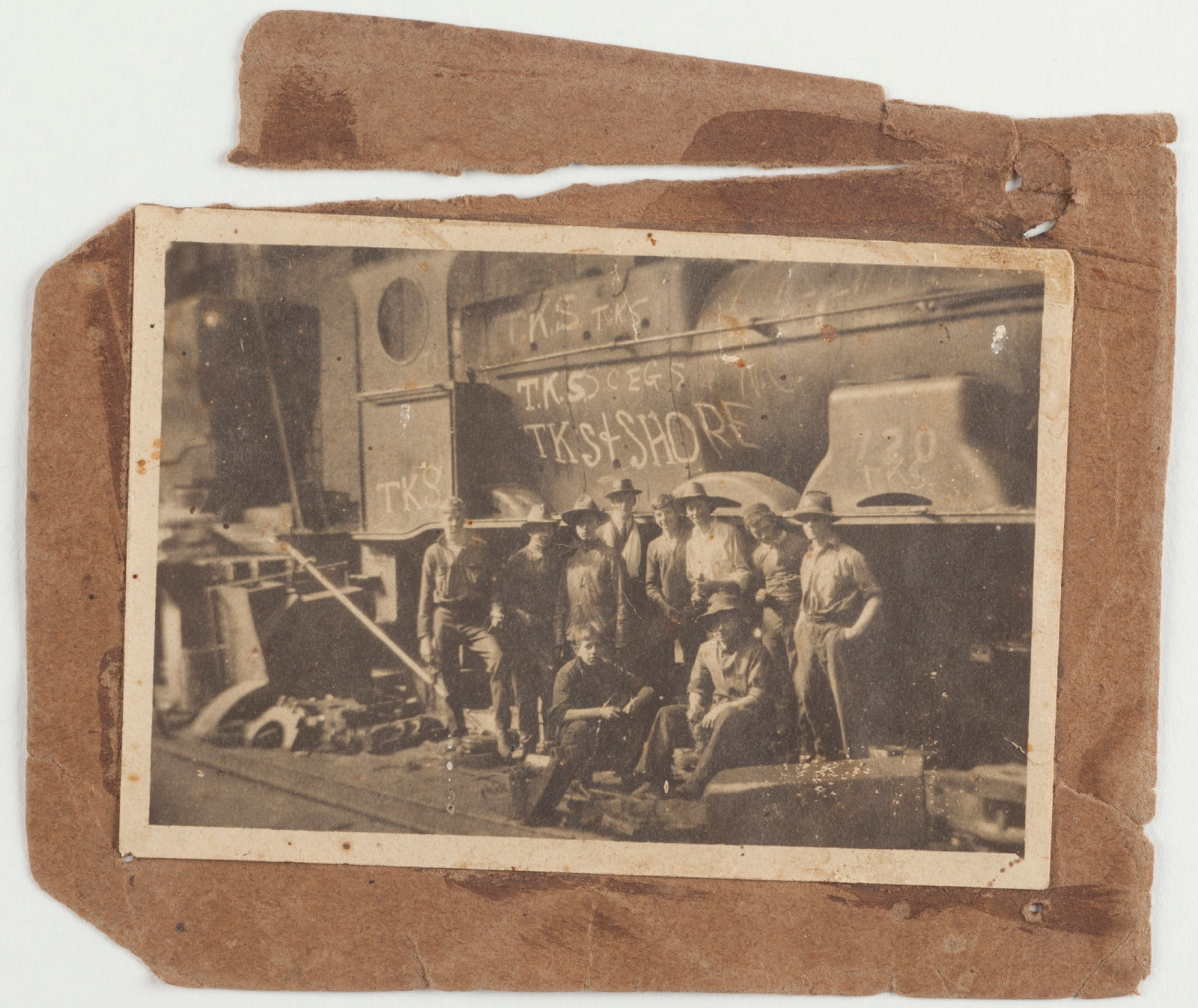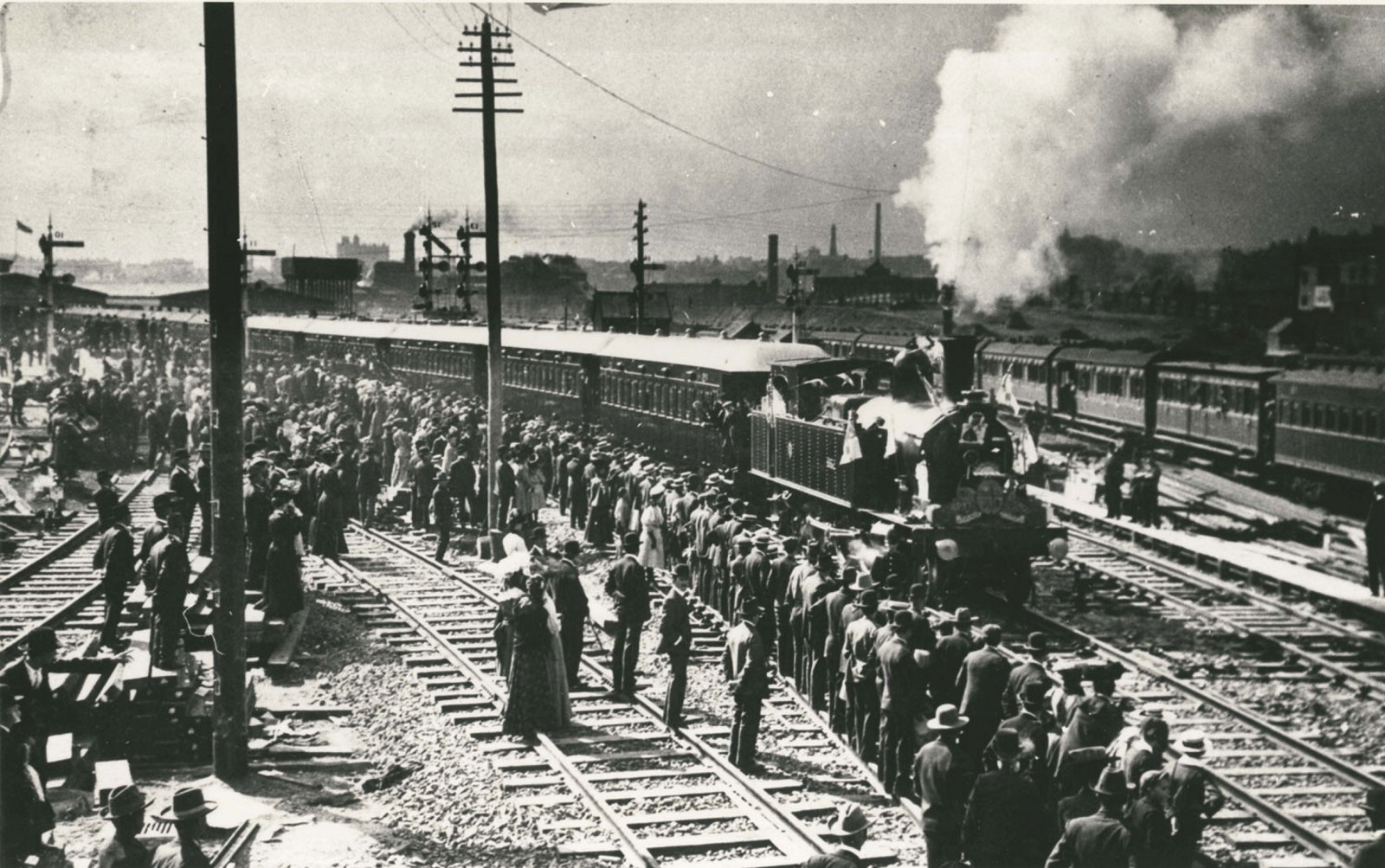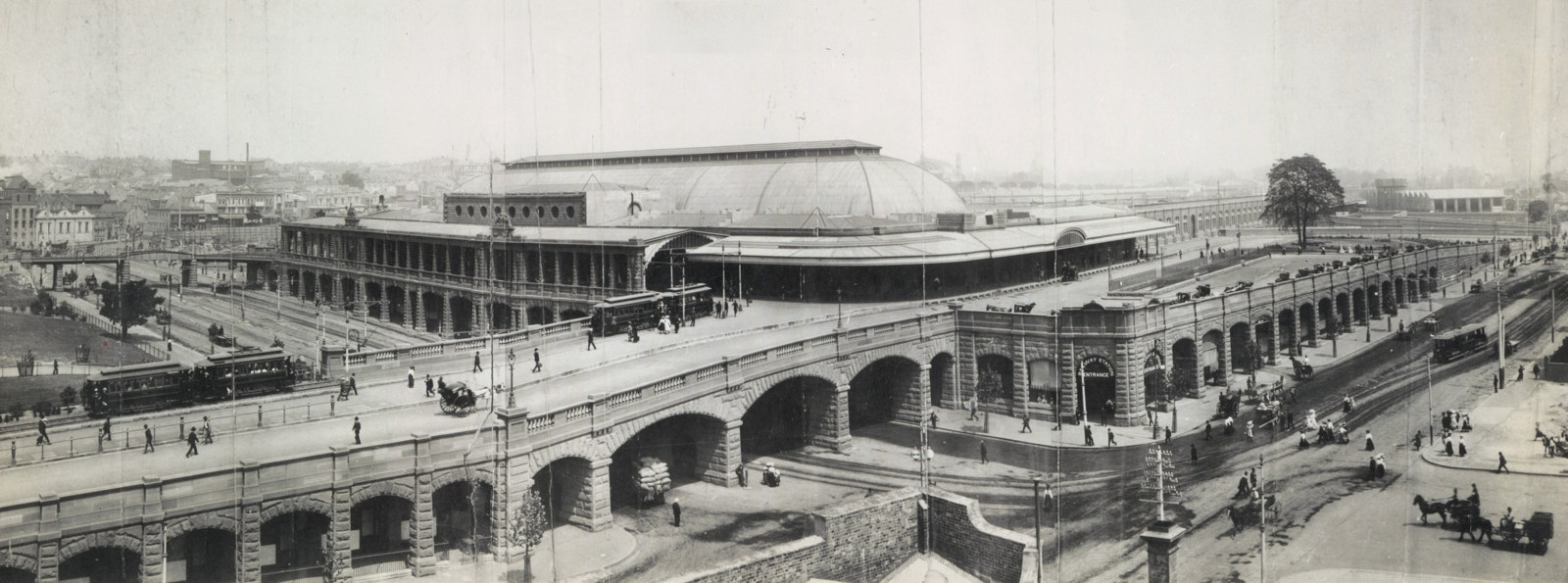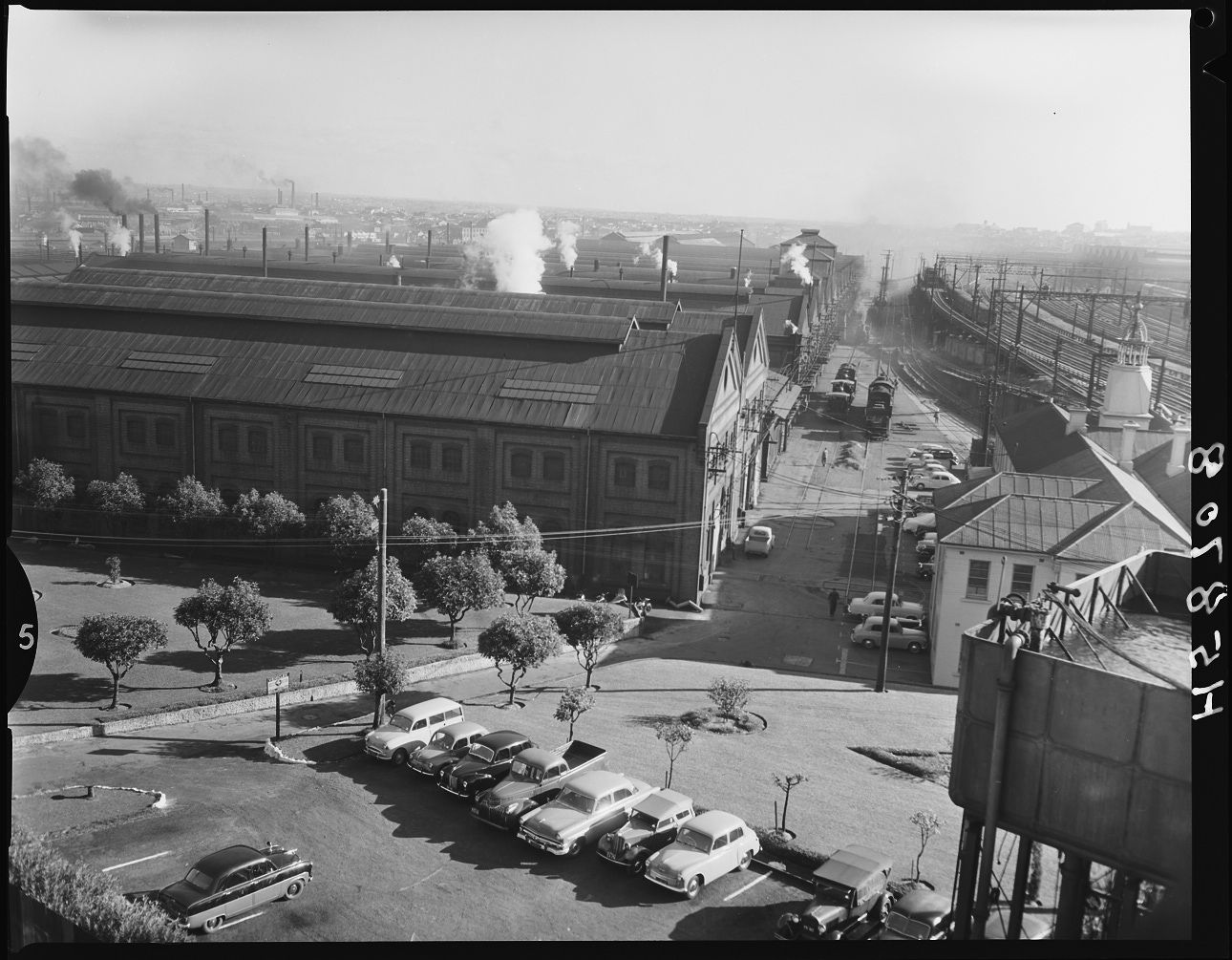Eveleigh Workshops during the 1917 railway strike
On the 2 August 1917 the General Strike began. It started in the Randwick Rail Workshops and Eveleigh Carriage Workshops over the introduction of a card system to record what each employee was doing and how fast the job was completed.
Workers were not allowed to view or modify the cards. The strike quickly spread from the railways to other industries such as coal miners, wharfies, factories and warehouses until about 100,000 workers were on strike. It lasted until 8 September 1917.
The Great Strike of 1917 is regarded as one of Australia’s largest industrial conflicts.1
Photos of the railway workers
A skeleton railways was kept operating with the help of 'Loyal' workers and voluntary help from the public.
This series of photos [NRS 15309] shows the Eveleigh Workshops during the 1917 railway strike. The was donated by W.J. Ellis to the Chief Commissioner of Railways James Fraser and the photos show the 'loyalist' individuals who were prepared to cross the union picket line to live and work on the railway premises during the strike.
They are shown at work, coming off shift, waiting for dinner, relaxing, at the "Camp Tobacco Shop", attending the "Barbers in the Paint Shop", or going to the "loyal theatre". This stopgap workforce was drawn from apprentices, clerical officers, coal fillers, kitchen and waiting staff, locomotive drivers, sub foremen, and their wives.
Private school boys volunteered at the Eveleigh Workshops.
Personal history cards & the strike
For employees born pre-1900
This series [NRS 12922] shows details relating to an individual's employment and provide information such as name, date of birth, educational qualifications and details of service.
These cards detail the service history of State Rail employees born prior to 1900, and were kept by the Finance Branch to record rates of pay, leave, and superannuation entitlements.
The samples below show personal history cards of some employees during the 1917 Railway Strike.
On 14 August 1917 the Government dismissed the striking rail and tramways workers for misconduct. On the personal history cards that can be viewed on this page this act is referred to as "Dismissed by Proclamation. Left work on Strike." After the Strike ended many of these workers were rehired but about 2000 workers were refused re-engagement.2 Many strikers found themselves in subordinate positions while Loyalists were given seniority and some strikers lost their accumulated superannuation.3
The railwaymen had to wait until 1925 for the Labor Premier, John T. Lang, to restore seniority and lost rights to the striking workers.
Strikers
Ben Chifley
Ben Chifley, later Prime Minister of Australia, started work with the railways in 1903 and worked his way up to train driver by 1917. Chifley's personal history card reflects his participation in the Strike and his eventual return to work as a driver and a fireman on reduced wages. In reality though, the job of fireman was a loss of seniority and when he started driving trains again he was only a junior driver. Chifley was later to recall the Strike and its aftermath as "a legacy of bitterness and a trial of hate."4
Joe Cahill
Joe Cahill, later Labor Premier of New South Wales, started work as an apprentice fitter and turner at the Eveleigh Workshops in 1907. Cahill was an active unionist[1]and his personal history card may reflect that with the notation under the 'Dismissed by Proclamation' stamp with the word "Agitator" in red ink. Cahill found work elsewhere before returning as a fitter and turner in 1922. He remained with the railways until 1925 when he was elected to Parliament as the Member for St George.
Other strikers
- William Sanderson. According to the red ink comment on Sanderson's card, during the Strike he used insulting language to those rail workers still on active service, in other words, strike breakers or scab labour. He was re-employed after the Strike
- Alfred Leslie was a Head Porter before the Strike and when he returned to work it was as a Parcels Porter. He did not regain his position as Head Porter until 1924
- Ernest Sargent. This card contains a handwritten notation of Sargent joining the Strike and being dismissed by proclamation.
Loyalists
- George Welsh. This card contains blue inked stamp of loyalty near top of card, the most commonly found indication of loyalty during the Strike
- William Sampson worked for the railways for forty years, starting as a Porter in Junee. The stamp used to indicate loyalty on this card is rarely found on other personal history cards
- Charles Sankey. This rarely found notation indicates that Sankey was a strike breaker who resumed work early on 11 August 1917 and avoided the dismissal by proclamation.
1. The Dictionary of Sydney. Great Strike 1917
2. John Gunn, Along Parallel Lines: A history of the railways of New South Wales 1850-1986, Melbourne University Press, 1989, p.288.
3. Ibid.
4. Brian Carroll, Australia's Railway Days: Milestones in railway history, Macmillan, 1976, p.70.
Related

WW1
‘Escapade’ at Eveleigh
On 2 August 1917, workers at Sydney’s Eveleigh railway workshops and Randwick tramway depot went on strike over the introduction of a time card system
Published on
Railway resources
Browse all
Central Railway Station: Through the Lens
Highlighting the transformation of Central Railway Station from its opening in 1855 to 1921 when the clocktower was completed

Railway employees guide
Employment with the Railways covered a large range of positions including driver, cleaner, engineer, draftsman, inspector, timekeeper, porter and ganger

